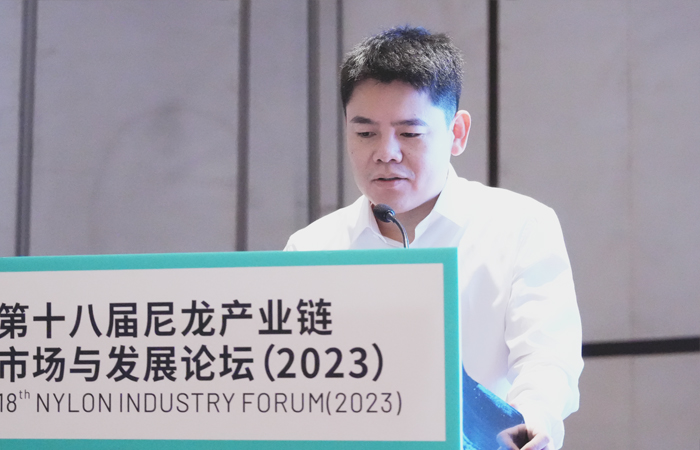Interpretation of global benzene market development
——Zhang Juntao, Zhejiang Petroleum & Chemical
Zhang Juntao, Manager from Zhejiang Petroleum & Chemical, delivered his report Interpretation of global benzene market development

The report focuses on the supply and demand structure of benzene in China, the demand characteristics of benzene in the US and the uncertainty of benzene supply in South Korea.
By 2022, China's total crude oil refining capacity has exceeded 980 million tons, surpassing the United States to become the world's largest oil refining country. It is expected that there will still be 65 million tons of new oil refining capacity added in China from 2023 to 2025. With the strengthening of oil refining capacity, China has taken a big stride in the petrochemical industry. Basic chemical raw materials such as ethylene and propylene have been growing rapidly in China, and the capacity of propylene and ethylene is expected to increase by 40 million tons from 2023 to 2025.
According to the global situation of benzene, South Korea is the largest exporter, while China and the United States are consumers with largest demand. Supply and demand structure of benzene in China is strong. Firstly, due to integrated production capacity, benzene supply and demand could basically achieve balance; secondly, with defensive capacity releasing, benzene market needs imports; thirdly, downstream product exports exceed the imports.
Benzene supply and demand structure in the United States has changed, and the demand has seasonal features. On the supply side, good reforming profit leads to high plant operating rates, while TDP margin is poor. On the demand side, chemical demand declines (China's styrene production capacity grows, and US styrene exports are squeezed and get substituted significantly.)
Lastly, there is uncertainty about the supply of benzene in South Korea. The production stability of reformers is high, but due to the influence of the rise of PX in China and the decrease in the import dependence of PX, TDP plant operating rate is restricted in South Korea. A large amount of light naphtha in China has entered the cracking unit, the self-sufficiency rate of ethylene has increased, while ethylene margin is poor in South Korea and thus the low operating rate of crackers has become a normal state.